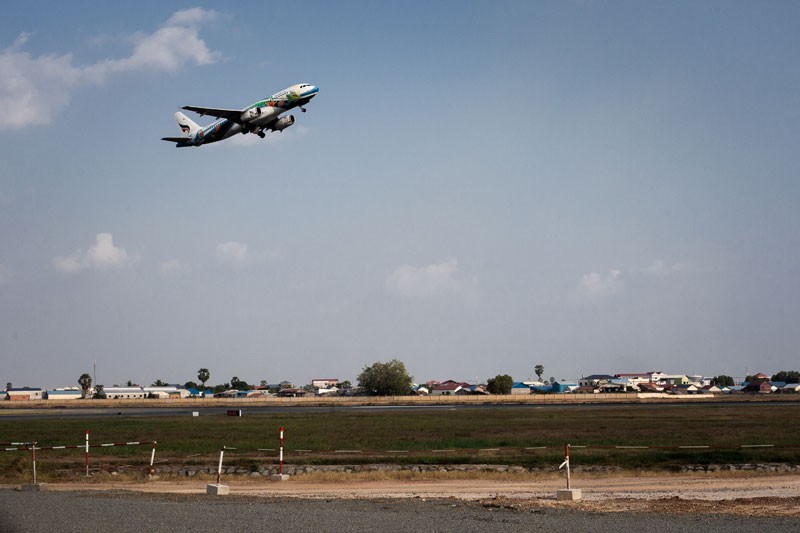In spite of gloomy prognostications at the start of 2015, Cambodia’s airports experienced double-digit growth in passenger numbers for the sixth year running, according to Cambodia Airports, which is expecting significantly slower growth in 2016.
“For 2015, the three international airports—Phnom Penh, Siem Reap and Sihanoukville—handled 6.47 million passengers. Year-on-year, that’s a 12.9 percent increase,” said Khek Norinda, communications director for Cambodia Airports, the company that holds the government concession to develop and manage the three airports.

In 2014, growth in passenger numbers was exactly 13 percent.
This year, Mr. Norinda said in an email, “Our forecast for the three airports combined [in 2016] is a 7 percent growth rate—mainly sustained by double-digit growth at Phnom Penh and Sihanoukville airports.”
“We may expect a subdued increase at Siem Reap airport due to a seeming erosion of tourist arrivals,” he said.
While Siem Reap remains the country’s busiest airport, Phnom Penh’s exceeded 3 million passengers in one year for the first time. The total flow at all international airports last year more than doubled that recorded in 2010.
At the start of 2015, some feared tourism would slump due to instability in Thailand and economic struggles in China.
In the end, Cambodia’s political stability, strong economy and exposure to the regional expansion in middle-class populations supported the growth of both tourist and business passenger traffic at Cambodia’s airports, said Sinn Chanserey Vutha, deputy director-general at the State Secretariat of Civil Aviation.
“I expect these factors to continue—and so we have estimated a 6 to 7 percent growth in regional passenger numbers,” Mr. Chanserey Vutha said. “We have strong expectations for passenger growth [regionally and in Cambodia] this year, but there always remains risks: financial crisis, maybe political instability and the risk of terrorism.”
The direct impact of travel and tourism accounted for about 13.5 percent of Cambodia’s gross domestic product (GDP) in 2015, according to the World Travel & Tourism Council, and is expected to remain robust, growing in line with GDP for the coming decade.
“We are looking to attract more Chinese tourists in particular, and are aiming for around 2 million by 2020,” Mr. Chanserey Vutha said.
“But the government will need to continue to support increasing the country’s air capacity to cope with growing demand.”
In early 2014, Cambodia Airports embarked on a $100 million investment project to double handling capacities at the Phnom Penh and Siem Reap international airports, with the first phase of terminal expansions expected to be complete by March. The company is also scheduled to upgrade the terminal in Sihanoukville in the coming months.
Ho Vandy, an adviser to the Cambodia Chamber of Commerce, said that while airport expansions were a step in the right direction, creating new provincial hubs, adding to domestic airline fleets and improving the quality of the hospitality sector should also be prioritized if the country is to tap into the benefits from rising regional passenger flows.
“Mondolkiri and the northern regions are attracting Western tourists, but they are underserved by the airline industry,” Mr. Vandy said. “And, there’s only really one airline here: Cambodia Angkor Air. Cambodia Bayon Airlines and Bassaka Air have limited routes and they’re foreign-owned.”
With the inauguration of the Asean Economic Community (AEC) this year—which waives entry visa requirements for travelers from Asean’s 10 member states—Mr. Vandy, who is also the managing director of World Express Tours and Travel, said he was confident that 2016 passenger numbers would reach new highs.
“This year will be a top year. More businessmen, investors and tourists should come to Cambodia with the AEC,” he said.
“But to capture its benefit we must continue to expand our capacity and improve the quality of our service sector.”




